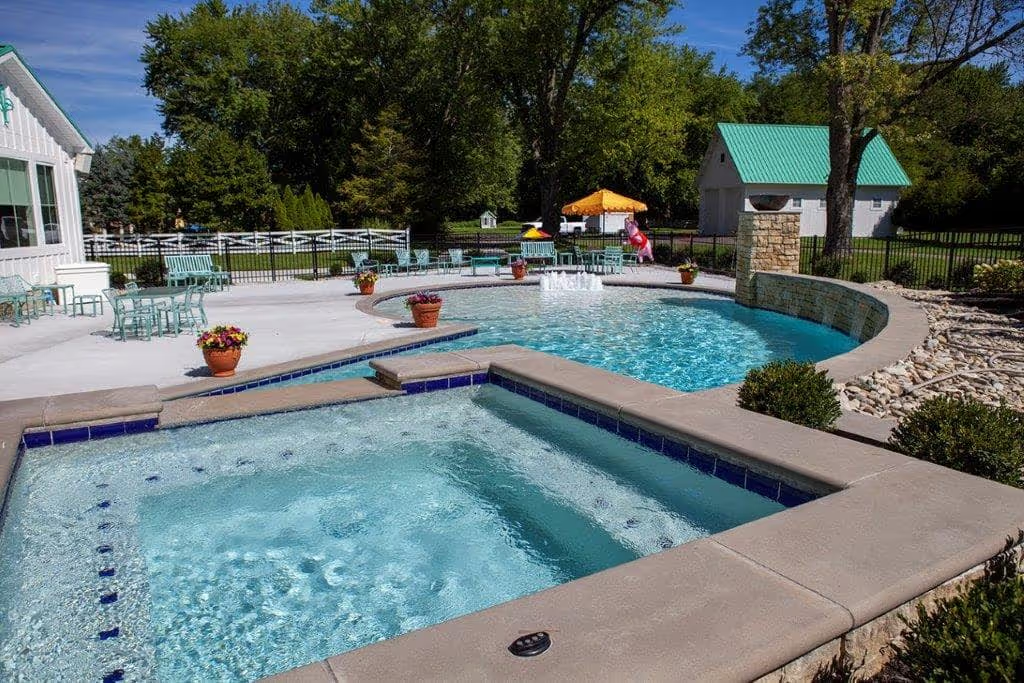- Stone Center
- Blog
Flagstone vs. Slate: Unraveling the Differences for Your Project
17/3/2025
2/19/2025
Flagstone vs. Slate: Unraveling the Differences for Your Project

The world of sedimentary and metamorphic rocks can be overwhelming, especially if the goal is to build rock walls. Flagstone and slate are both natural stone options popular for hardscaping, but what exactly sets these materials apart? Understanding the key differences between slate vs. flagstone can help you choose the right material for your patio, walkway, or wall project.
In this guide, our team at Stone Center, LLC will compare and contrast flagstone and slate in terms of appearance, texture, durability, patterns, and more. Whether you prefer slate's smooth uniformity or flagstone's earthy colors and customizable shapes, read on to learn all about the distinguishing characteristics of each stone to help you make your decision.
What Is Flagstone?
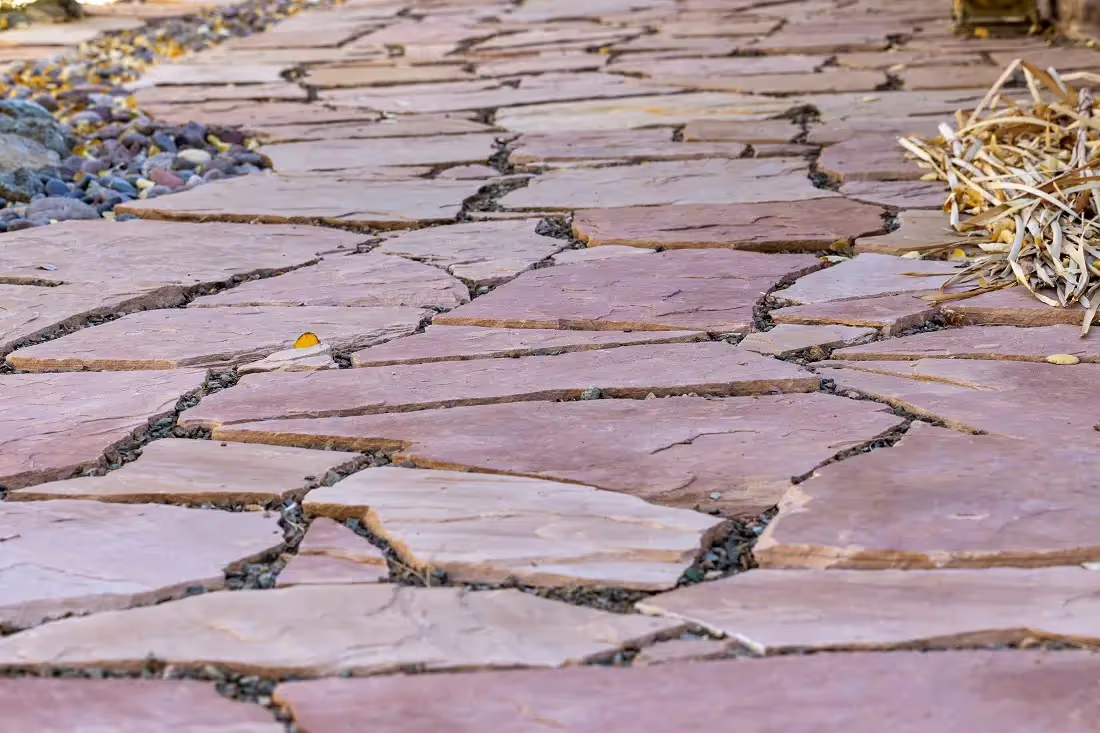
Flagstone is a broad term used to describe a range of sedimentary and metamorphic rocks. These rocks are called flagstones because they can be easily split into flat segments that are used to pave patio walkways and build rock walls, in addition to other home applications.
Curious about what makes flagstone so unique and versatile? Dive into our complete guide on what flagstone is to discover its origins, features, and applications!
What Is Slate?

Slate is a type of rock that many find difficult to differentiate from flagstone, and for a good reason. It's the metamorphosed form of the sedimentary rock, shale. Shale, a fine-grained rock rich in organic matter, undergoes immense heat and pressure deep within the earth’s crust.
These conditions cause chemical and structural changes, converting shale into slate that can be easily split into thin layers, which makes this type of stone dense, smooth, and highly durable. Because of its refined look and weather resistance, slate is widely used in both modern and traditional designs.
What Is the Difference Between Flagstone and Slate?
Though they have some similarities, flagstone and slate have distinct differences. Let's compare these two types of sedimentary and metamorphic rocks in terms of appearance, texture, durability, and more.
Flagstone vs. Slate: Appearance
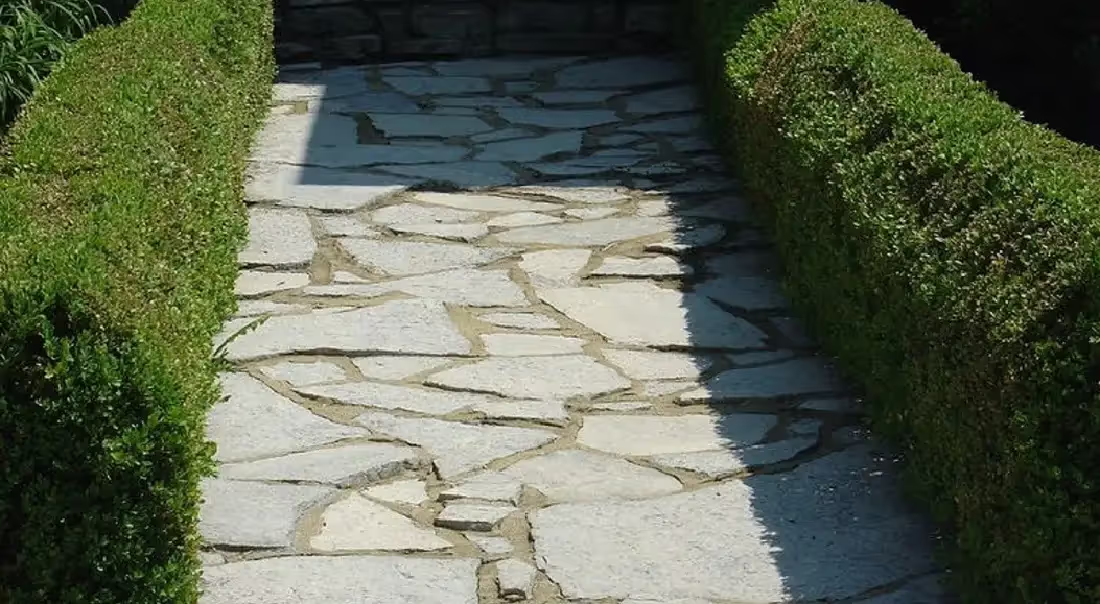
Flagstone and slate exhibit notable differences in terms of appearance. Flagstone types have natural irregular shapes and earthy hues that create a rustic and organic look. It's often used to create charming pathways, patios, and rock walls.
On the other hand, slate offers a more refined and uniform appearance. Its smooth and sleek texture, along with its wide range of colors like grey, black, and green, makes it a popular choice for contemporary and modern designs. Whether you prefer the rugged beauty of flagstone or the elegant appeal of slate, each material brings its unique aesthetic to landscape and architectural projects.
Flagstone vs. Slate: Durability and Climate Suitability
Slate and flagstone are both popular choices for outdoor paving, but they differ in terms of durability. Slate, a low-grade metamorphic rock, is known for its exceptional durability, making it highly resistant to weathering, fading, and cracking. It can withstand heavy foot traffic and harsh weather conditions over time. Slate’s resistance to weather extremes makes it particularly well-suited for regions with frequent freeze-thaw cycles, ensuring longevity in challenging climates.
Flagstone is a durable and versatile material, but its performance depends on the type of stone and climate. It thrives in milder regions but can be prone to chipping or cracking in extreme freeze-thaw conditions. Proper sealing and maintenance enhance its weather resistance, ensuring lasting beauty and functionality in outdoor spaces.
Flagstone vs. Slate: Best Uses
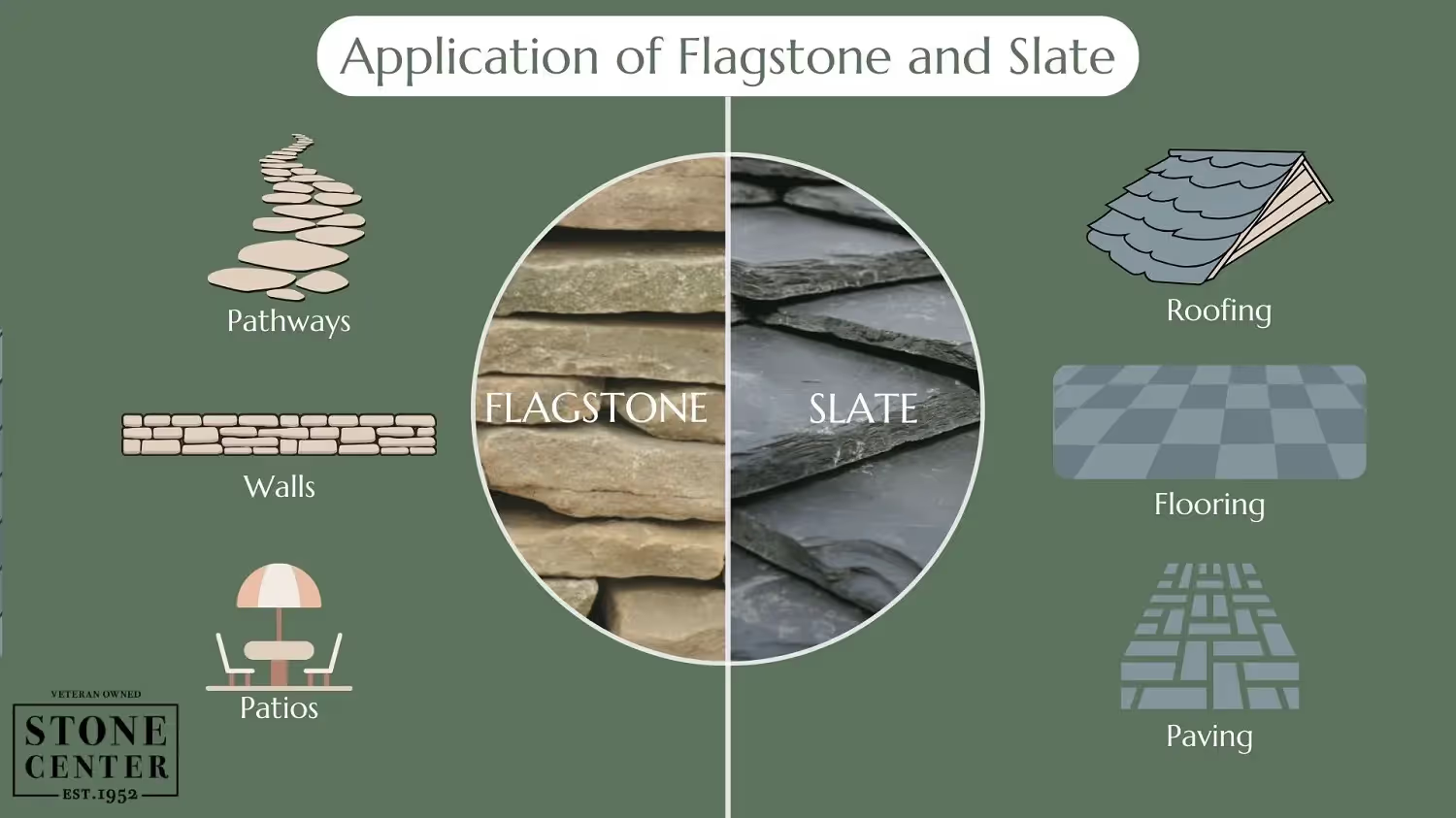
Flagstone and slate offer distinct characteristics that make them suitable for different applications. Flagstone is a versatile landscaping stone that's commonly used for a variety of outdoor projects. Its flat segments and irregular shapes make it ideal for creating natural-looking pathways, flagstone patios, and walls. Flagstone can also be used in architectural designs to add texture and visual interest.
In contrast, slate is often chosen for its smooth and uniform appearance, so it's a popular choice for paving, flooring, and roofing. Its durability and resistance to moisture make it ideal for areas that experience heavy foot traffic or extreme weather conditions. Whether it's for landscaping or architectural purposes, both flagstone and slate bring their unique charm and functionality to any project you may have.
Flagstone vs. Slate: Ease of Installation
Flagstone is typically more DIY-friendly due to its natural shapes and relatively lighter weight. Homeowners can often place flagstone for patios or pathways without needing extensive professional help. However, uneven pieces may require additional time and effort to level during installation, so be patient during this process.
Slate is denser and heavier, so it often requires professional installation. Its precise cuts and smooth surfaces demand expertise to guarantee a flawless finish. While slate’s uniformity can speed up installation for certain projects, its weight and need for specialized tools may not be ideal for DIY enthusiasts.
Flagstone vs. Slate: Maintenance
Flagstone and slate differ in terms of maintenance requirements. While both materials are known for their durability, flagstone generally requires more regular maintenance compared to slate. Flagstone may need periodic sealing to protect it from stains and water damage. It may also require occasional re-leveling and replacement of loose stones.
However, slate is relatively low-maintenance, especially compared to other materials. With minimal upkeep, slate can maintain its appearance and integrity for many years. However, it's important to note that the specific maintenance needs may vary depending on the quality and type of flagstone or slate being used.
Flagstone vs. Slate: Cost
The cost of flagstone and slate depends on factors such as quality, thickness, and origin. Flagstone is a budget-friendly option for many outdoor projects. The range of flagstone’s prices allows homeowners to find an option that fits their budget and aesthetic preferences.
Slate, on the other hand, is slightly more expensive. The higher cost reflects slate’s refined appearance, greater durability, and the labor-intensive quarrying process. While slate is pricier, it offers exceptional longevity and a sleek finish that many find worth the investment.
If your project prioritizes rustic aesthetics and affordability, flagstone is a practical choice. For sleek, modern designs or high-traffic areas requiring more durability, slate may be the better investment.
Flagstone vs. Slate: A Quick Summary
Whether you’re designing a rustic patio or a sleek walkway, understanding their differences can help you make the right choice. Below, we’ve summarized the key differences between flagstone and slate to help you decide which material is ideal for your needs:
There’s no doubt that both flagstone and slate bring unique advantages to outdoor and indoor projects, catering to different design styles, climates, and levels of maintenance. We encourage you to use the comparison above to weigh factors like durability, ease of installation, and long-term upkeep to make an informed decision.
Which Stone Is Right for Your Project?
Both flagstone and slate have their advantages, and your choice ultimately depends on your project’s priorities. If you’re looking for an affordable material with a rustic, natural look, flagstone is an excellent option for patios, pathways, and decorative landscaping. For projects demanding durability, water resistance, and a refined appearance, slate is worth the investment.
Are you still unsure which stone is best for your project? Stone Center has decades of experience and can help you explore a wide range of natural stones, including different types of flagstone. We know that no two projects are the same, and our experts can guide you through the selection process and help you find the perfect match for your vision. Contact us today to see your options!
FAQ
.avif)
Jon, the owner of Stone Center, is a knowledgeable expert in natural stone products, specializing in various types of stone for landscaping and architectural projects. Passionate about promoting the beauty and versatility of natural stone, Jon aims to use these blogs to inspire readers with creative ideas to upgrade their homes.
How much does it cost to get a stone restored?
How much you end up spending to restore stone varies on the type of stone, the technique, and the stone’s current condition. Stone in good condition will cost less to restore, whereas stone that has a lot of wear and tear may require a longer restoration.




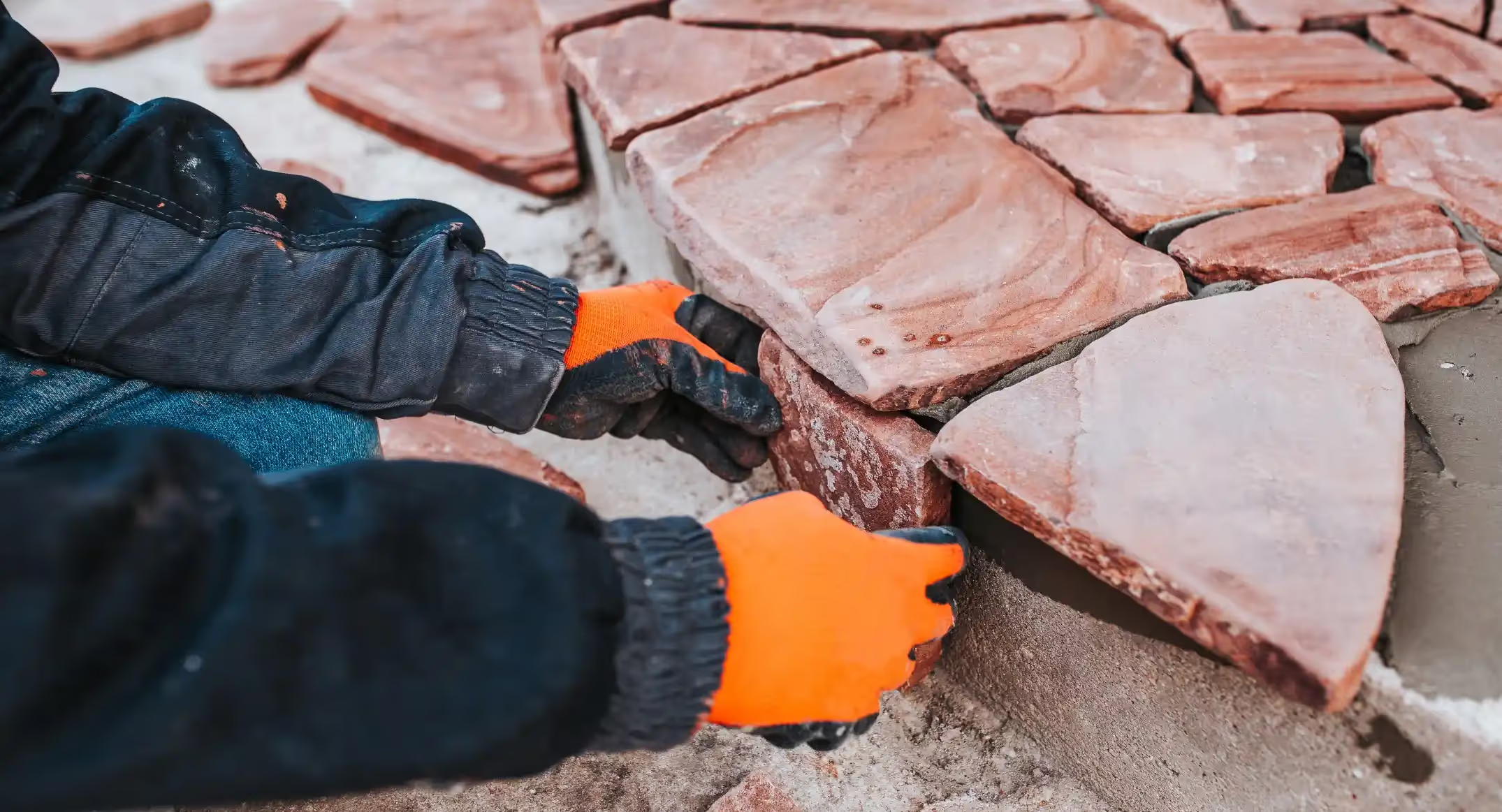


.avif)
.avif)
%20(1)%20(1).avif)
